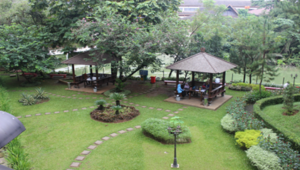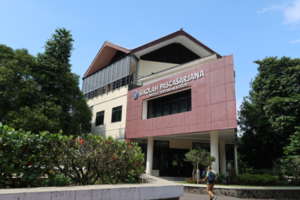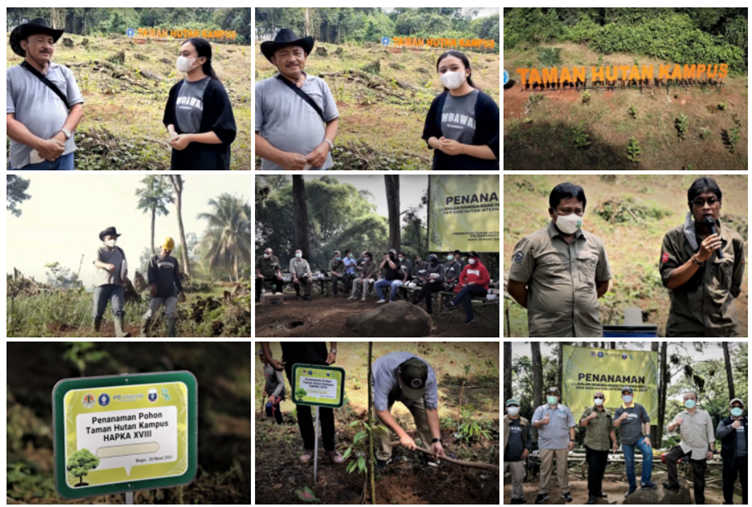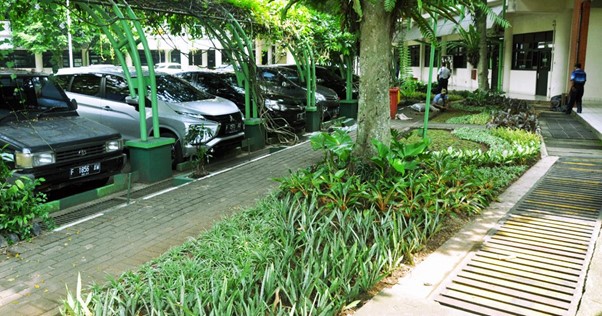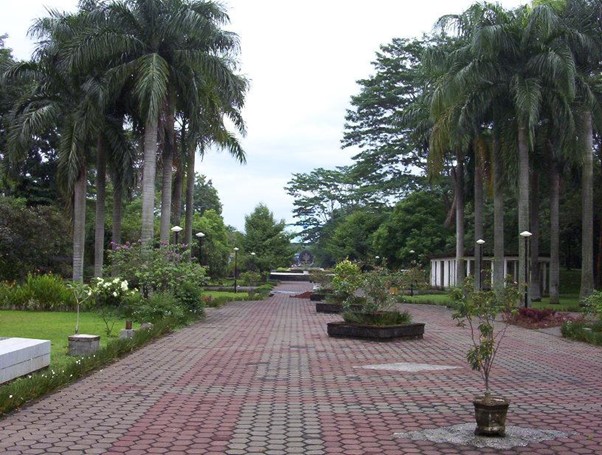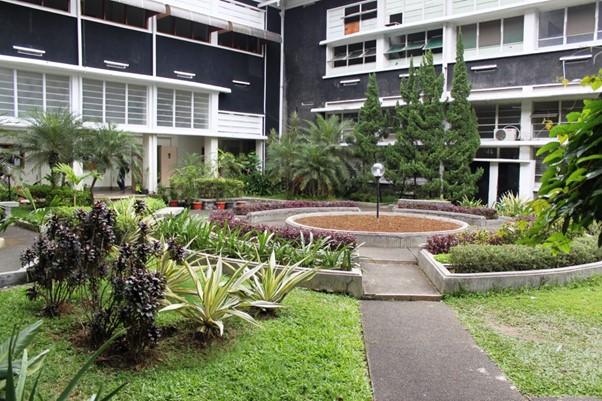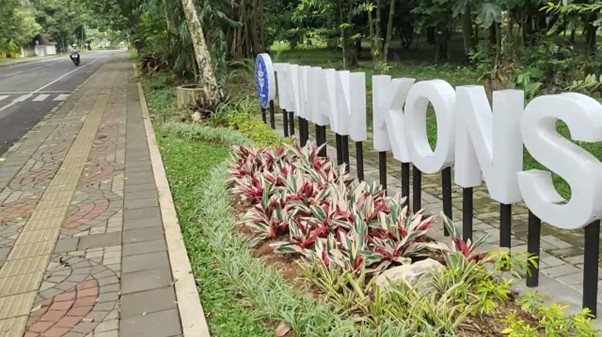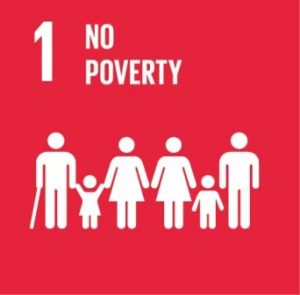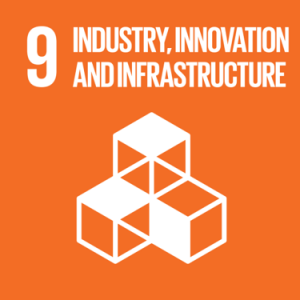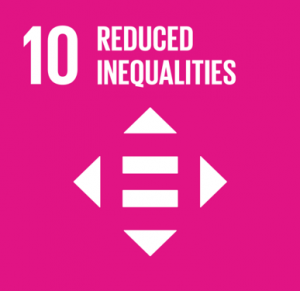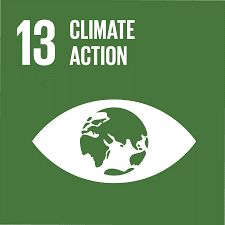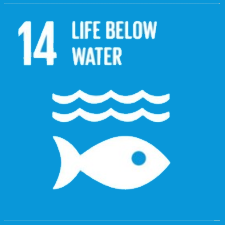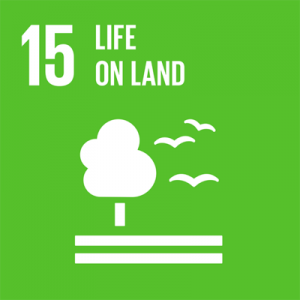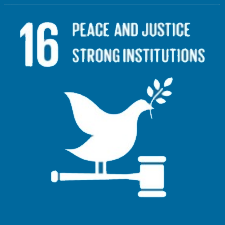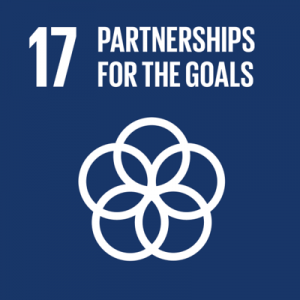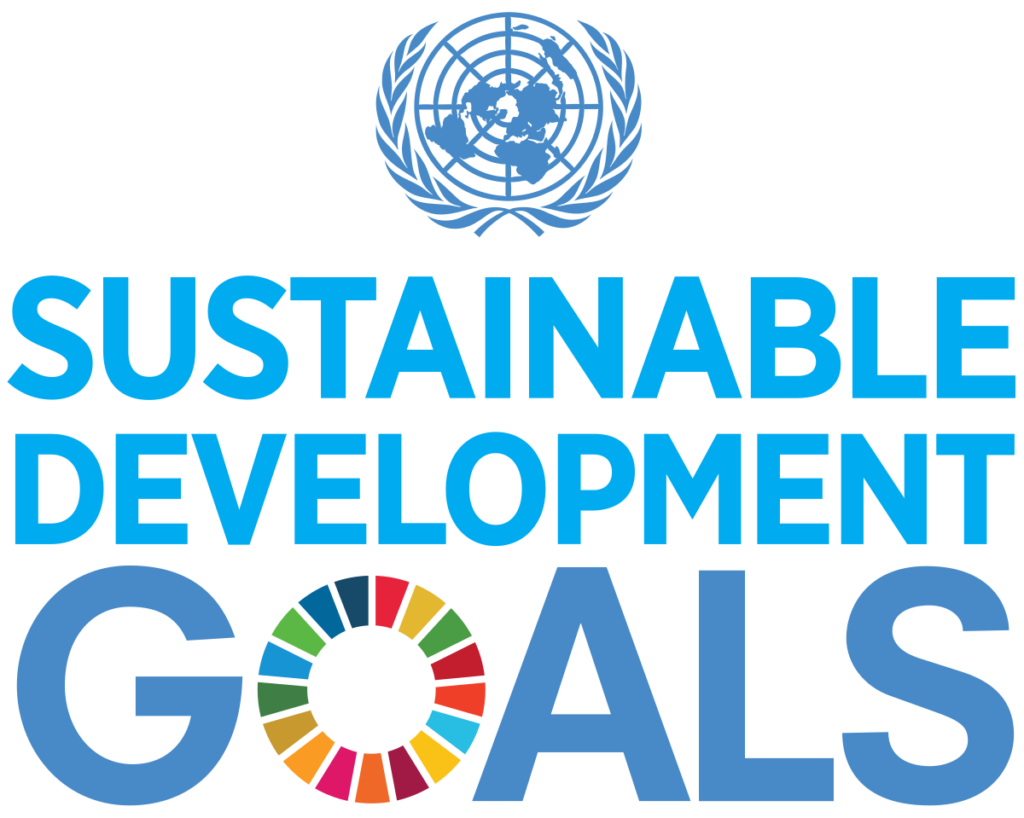SUSTAINABLE DEVELOPMENT GOALS
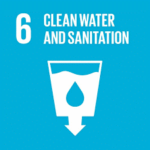
SDG 6: CLEAN WATER AND SANITATION
“Without water we can’t live. Water supports out agriculture and aquaculture. Clean water is vital. However, due to bad economics or poor infrastructure, millions of people including children die every year from diseases associated with inadequate water supply, sanitation and hygiene.”
(THE Impact Rankings)
Water consumption per person
IPB University has 2 stations of Clean Water Treatment Process (WTP) at Dramaga Campus. The total water consumed at IPB University during 2021 was 1,488,297 m3 (a 69% decrease compared to 2019 due to the pandemic) (Sustainability Report page 36; Water Processing System page 5).

Water usage and care
Waste water treatments in IPB are located in several locations in the campus area. In addition, the wastewater treatment plants are directed at two locations, namely on the Northeast side (WWTP I) and the West side (WWTP II) of the IPB campus.
We also provide Standard Operation Procedures (SOP) about wastewater management and clean water supply service that are regulated and supervised by the Directorate of General Affairs IPB University.
IPB University applies the following: disposing of waste in a concrete septic tank, using Grease Trap in the canteen used water management, and managing toxic and hazardous laboratory waste through collaboration with a third party (Prasadha Pamunah Limbah Industri (PPLi). IPB University has a clean water treatment unit with natural water sources from rivers around campus with very high turbidity levels. In 2021, three artificial lakes (DAM) were built within IPB University. These programs were supported by IPB private partners, such as PT Nutricia Indonesia Sejahtera by Danone Indonesia. It is hoped that with the construction of this DAM, it can become a source of clean water needs, such as in field laboratories requiring untreated water. (IPB Sustainability Report page 36). Moreover, IPB University provides water system pollution solutions by building used water treatment installation (IPAL). We also provide Standard Operation Procedure (SOP) about Wastewater Management that regulated and supervised by Directorate of General Affair IPB University.
IPB University provides free drinking water facilities through drinking water fountains available in almost every Faculty. This drinking water is freely available for all lecturers, students, and visitors by placing fountain facilities in some facilities. The drinking water fountains can be found in most faculties. The drinking water fountain is also available in other facilities often used by students, namely the Common Class Room Building and Al Huriah Mosque (IPB Sustainability Report page 37). IPB designs a program called The Waqaf for Water Station, a charity program. In 2021, this program will be implemented and raises Waqaf donations from the campus population for installing more water stations (“Wakaf Water Station”).
Landscape and infrastructure are two main essential aspects that play a significant role in IPB University in achieving environmental, socialbehavioral, or aesthetic outcomes. In 2019, the rector mandated that all new construction and major renovations on campus achieve a green ship certification. The leader’s commitment creates policies concerning the arrangement, utilization, and control of land and buildings.
Green building standards guide IPB University in continuing to discover the role that construction, design, and operations play in our sustainable campus future. Four things are priorities of IPB University: The existing building does not meet the green building concept standard, designing a new building with a green building concept, revitalizing drainage, and normalizing the campus ring road inspection. IPB University is also committed to applying building standards to minimize water use, such as automatic water traps.
Several buildings were assessed for their suitability with the green building concept. The assessment results for the land use category met 11 points out of 16 points (68.75%), the water conservation category met 5 points out of 20 points (25%), and the building environmental management category met 4 points out of 13 points (30.77%).
In order to minimise water use, IPB University plants various green plants that do not need watering in raining season and only need occasional watering in dry season. In addition, many varieties of rare plants can be found in IPB University. Green plants (trees) have been planted in most of the IPB campus to beautify the campus landscape. Trees are planted along roads, parks, conservation garden, and forest arboretrum. The trees do not require watering during the dry season so they are drought-tolerant plants. Meanwhile, the IPB conservation garden was dominated by Samanea saman species. The IPB conservation garden applies a polyculture cropping pattern.
Water re-use
The IPB University has a water reuse policy to maximize water reuse in IPB University, regulated in IPB Rector’s Decree No. 133/IT3/LK/2020 concerning IPB’s commitment to SDGs Achievement.
Rector’s Decree No.133/IT3/LK/2020: Commitment to Achieving SDGs
The IPB Senate’s academic text mandates water reuse for the park’s maintenance (Water Sensitive Management, page 108, Evidence 2). Biodiversity Park and Inspiration Lake is a water conservation program implemented by IPB University within the campus area. This program aims to sustainably manage freshwater resources and prevent water pollution in nearby lakes, rivers, and local watersheds in the IPB University environment.
The directorate of general affairs measures and monitors water reuse at IPB University. Water use in IPB is sourced from 3 main components, namely the water treatment process, lakes, and regional drinking water companies. Most water use in IPB is sourced from water recycling through water treatment and artificial lakes.

Water in the community
IPB University provides various opportunities through education and research activities in collaboration with various stakeholders, including local community, to learn about good water management. The example, student activities to Preserve The Campaka Springs using kaizen method, where the springs had the problem about the hygiene-related issues, the threat from the tourism sector as well as the lack of public awareness and limited knowledge of managers to actively manage the Campaka Springs. Student also publish to the community development journal as an effort to spread an effective model of community service for the target of spring management.
IPB University Students Apply Kaizen Method to Preserve The Campaka Springs
Another example is webinar activities. The Center for Environmental Research (PPLH), Institute for Research and Community Service (LPPM) IPB University held the second series of webinars with Pain Completely Disposal and/or Utilization of Wastewater In terms of efforts to conserve water resources.
PPLH IPB University Completely Peeled Waste Disposal and/or Utilization
IPB as a body is active in the appeal for water-saving behavior installed in all toilets and water sources.
IPB conducted community services through training on making biopore to increase water catchment areas held in Malasari Village, Bogor, West Java.
Training on Making Biopores to Improve Water Catchment Areas
In addition, Dr. Hendrayanto as IPB Expert, promotes conscious water usage through sharing knowledge sessions about the effectiveness of infiltration wells in urban areas. He explained that the capacity of the infiltration well is determined by the volume and surface area of the infiltration, the rate of absorption of the soil permeability, and the height of the groundwater table. The permeability of the infiltration well will decrease over time due to many fine particles (clay) closing the pores. To overcome this, infiltration wells must be treated to maintain soil permeability. He explained that the depth of the well needs to pay attention to the depth of the groundwater level. Therefore, do not let infiltration wells even fill with groundwater.
Dr Hendrayanto Explains the Effectiveness of Infiltration Wells in Urban Areas
IPB University supports water conservation off-campus through the following programs:
The Independent Volunteer Action for IPB University Alumni Association (ARM HA), in collaboration with the society of Palada and the Quran Village volunteer network, has worked hand in hand to connect the following pipes to build a water reservoir. In addition to piping, the volunteer team also built communal toilets that the community could share. Multi-stakeholders and local governments also have roles and contribute to the program implementation.
ARM HA IPB University and Society of Palada, Mamuju Build Clean Water Pipes and Communal Toilets
IPB University alumnus, Meriana Ina Kii encourages the young generation to care about crisis disasters in water on Sumba Island, East Nusa Tenggara (NTT), on the talk show entitled “Greeting the Country”. Meriana is directly involved in overcoming the water crisis in agricultural land management. He invited the young generation in NTT, especially Sumba, to care about the environment and use water wisely for agriculture. Meriana also shared his experience in regulating water flow from rivers as optimally as possible to keep the soil moisture in the rice fields so they continue to produce optimally.
IPB University Alumnus Encourages Young Generation to Help NTT Overcome Water Crisis
The Center for Environmental Research (PPLH) held a Webinar series with the theme “Peel the Complete Wastewater Disposal into the Sea”. This activity is the contribution of academics to disseminate the latest environmental management regulations issued in 2021.
PPLH IPB University Discusses for Wastewater Disposal into the Sea
IPB University lecturer from the Faculty of Agriculture, Prof. Suria Darma Tarigan, explained the effective infiltration depth well. He explained Infiltration wells could help absorb some of the runoff water into the groundwater. This will happen if the groundwater level is more than 2.5 meters and the soil permeability is more than 2.0 centimeters per hour. Furthermore, several things need to be considered in the construction of water absorption wells, and infiltration wells should be built in areas with a groundwater level of more than 2.5 meters.
IPB Professor Describes Effective Depth for Infiltration Well
IPB Univeristy is committed to use sustainable water extraction in related to university perimeter technology, in and outside the campus. Biodiversity Park and Inspiration Lake is a water conservation program implemented by IPB University within the campus area. This program aims to sustainably manage freshwater resources and prevent water pollution in nearby lakes, rivers, and local watersheds in and outside of the IPB University environment. In 2021, three artificial lakes (DAM) were built within the IPB University. It is hoped that with the construction of this DAM, it can become a source of clean water to supply water needs, such as in field laboratories that require untreated water, flood control and plant watering (Sustainability Report page 36).
IPB works with various local, regional, national and global governments on water security. For example, IPB works with the DKI Jakarta Provincial Government untuk melaksanakan monitoring kualitas lingkungan air sungai. The analysis, evaluation, and recommendations that have been compiled can be considered in formulating river management policies in DKI Jakarta Province.
DKI Jakarta river water environmental quality monitoring report
The research team from the Centre for Alternative Dispute Resolutions, Regulation & Policy Analysis and Community Empowerment (Care) IPB University submitted a report on the research results in the waters of Lake Toba (2020-2021) the Governor of North Sumatra. One of the suggestions for the government is to oblige all related parties to use eco-friendly technology in activities on Lake Toba. So that it directly reduces the entry of contaminants into the waters.
IPB University’s Center for Environmental Research (PPLH), The Norwegian Institute for Water Research (NIVA) and The Center for Southeast Asian Studies (CSEAS) monitored plastic waste in the Citarum River tributaries. This research was part of the ASEAN Norwegian Cooperation Project on Local Capacity Building for Reducing Plastic Pollution in the ASEAN region (ASEANO). This ASEANO program involved several institutions researching plastic waste.
SDG 6 IN NUMBER
2,592,066 m³
Volume of water used in the university: Inbound (treated/extracted water)
34,474
Number of campus population
RELATED NEWS
It seems we can't find what you're looking for.


